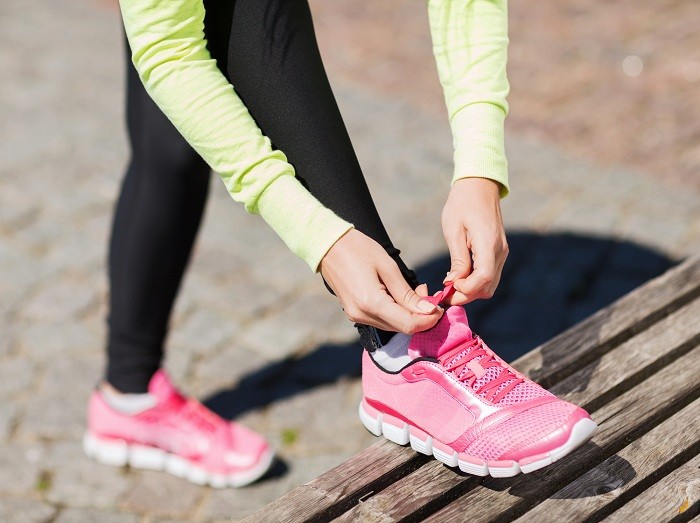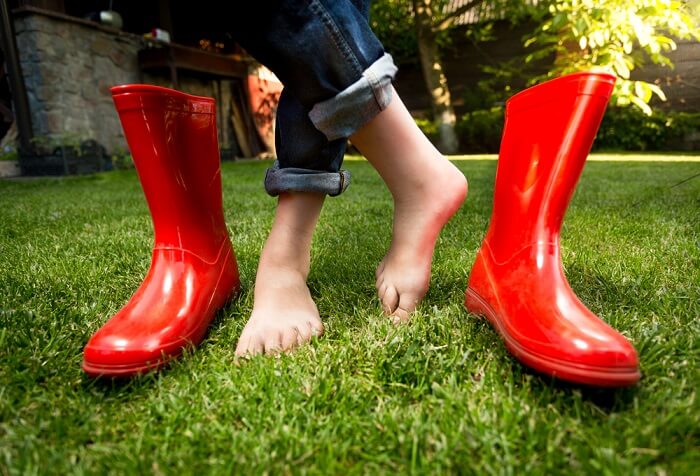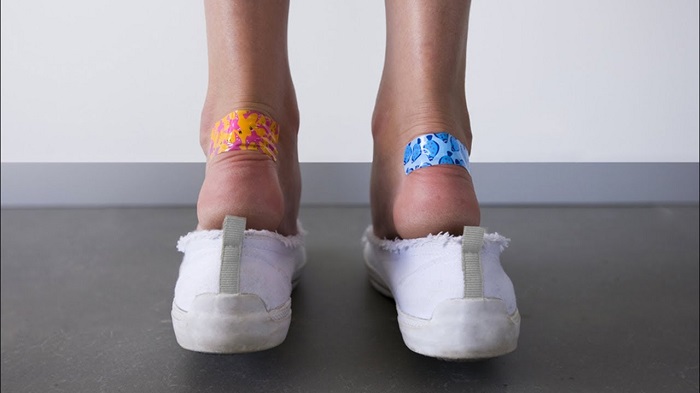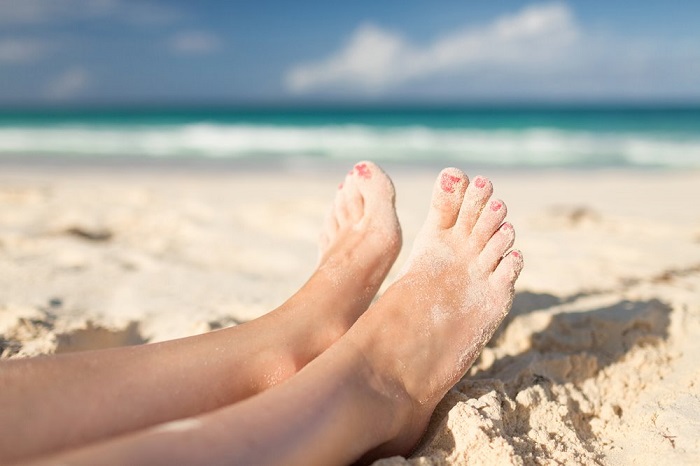There are many causes for blisters. However, the one thing they have in common is that they hurt and can develop into something much worse if not treated promptly. Whether blisters may be the result of poor fitting shoes, contact with poisonous plants, insects or animals, exposure to infectious diseases or something else, being aware of the causes and solutions could help prevent a more serious condition to develop. Following are a few tips focused on how to prevent blisters before they occur.
Tip 1: How to Prevent Blisters with the Right Shoes

Cause
Friction blisters are caused by shoes that rub against the sensitive skin on your feet and toes that are difficult to heal. Preventing them in the first place is important. That means wearing shoes that fit properly and are designed for the task.
Unfortunately, although all shoes of a certain style will be made the same way, it doesn’t mean they will fit everyone’s feet the same. It’s important than when shopping for shoes that thought be kept in mind.
What to Do about It
- Solution 1. When you buy shoes make sure that they are roomy especially around the balls of your feet and your toes. The toe box should allow you to wiggle your toes freely. The heel should be snug enough not to slip.
- Solution 2. It’s important to remember that your feet swell during the day. They can be up to 1/2 size larger by evening so when you purchase shoes, shop in the late afternoon so you get the best fit.
- Solution 3. The shoes you wear should not have rough edges that can rub against your foot or toes and that they are so large they are sloppy.
- Solution 4. When purchasing shoes for hiking and running you also need to keep in mind what your feet are going through during your period of activity. When running and walking uphill, for instance, you’ll put more weight and strain on the balls of your feet as well as at the bend in your toes. While going downhill, on the other hand, gravity will push your feet farther into your shoes unless they are solidly anchored at the ankles.
Tip 2: How to Prevent Blisters from Nature

Cause
Whether walking, hiking or running, it’s not uncommon to become exposed to plants and animals that contain toxins that result in blisters. Poison ivy, poison oak and sumac are just a few of the plants that individuals encounter when enjoying their favorite activities.
Additionally, insects such as mosquitoes, blister beetles, ticks and spiders along with animal bites or stings can develop into blisters. That’s a directly result of the toxins injected as they pass through the skin and the body’s defensive reaction.
What to Do about It
- Solution 1. Be aware of your surroundings.
- Solution 2. Make sure you avoid contact with woodland creatures, insects and plants to the maximum extent possible.
- Solution 3. If your going to be in an area that has insects such as mosquitoes, be sure and apply an ample amount of insect repellent.
- Solution 4. Avoid contact with plants that contain toxins that can irritate the skin. When exposed to toxic plants the skin will often generate a rash or welts in response to the attack. Rashes are a form of blistering.
- Solution 5. It’s better to walk around than take a chance.
Tip 3: How to Prevent Blisters from Infections

Cause
Your skin is your wall against environmental attacks. If there is an opportunity for viruses and bacteria to get through the skin, they will do everything they can to do so. Although you wouldn’t consider it a problem while walking, running or hiking, anytime you’re in the company of others you take the chance of becoming exposed to such diseases.
There are various infectious diseases that will cause the skin to blister. These could include things like ringworm, cold sores, shingles and athlete’s foot infections. Other problems like impetigo, which is a bacterial skin infection, or scabies, which is a mite infection, also cause blistering irritations.
What to Do about It
- Solution 1. Anytime you plan an activity that involves others, make sure those that will accompany you are feeling well and do not have symptoms of a disease you could also acquire.
- Solution 2. While showering in others shared by others, be sure and wear shower shoes.
- Solution 3. When walking, running or hiking make sure your feet stay dry. Change your socks frequently especially if they become damp from the conditions or sweat.
- Solution 4. Carry a hand sanitizer and use it frequently. Additionally, avoid touching your face without the use of a Kleenex, paper towel or hand towel.
Tip 4: How to Prevent Blisters from Exposure

Cause
The sun’s ultraviolet rays passing through the atmosphere can result not only in reddening of the skin but blistering as well. When in the sun, the amount of UV radiation you’re exposed to changes from minute-to-minute based on the angle of the sun. As would be expected, the time when you’re most vulnerable is at noon when the sun is high overhead.
It is also common to develop blistering with frostbite. The blisters can appear within 24-48 hours after the skin has been rewarmed. Blistering of the skin after sunburn is the sign of a 2nd degree burn. Blistering after frostbite, however, is a sign of a serious burn that requires medical treatment.
What to Do about It
- Solution 1. When planning to be in the sun use a sunscreen that has a high SPF rating and be sure and reapply it as directed.
- Solution 2. When you feel you have reached a safe exposure limit, don clothing that will provide full coverage along with a wide-brimmed hat.
- Solution 3. When hiking in freezing conditions be sure and dress appropriately and have additional supplies such as a ski mask and neck scarf that can be used to reduce exposure even further.
- Solution 4. Warm yourself as soon as possible after seeking shelter then get medical attention as soon as possible.
The Bottom Line
Blisters are the body’s natural defense mechanism that protects the skin against additional injury while also promoting healing. It is most frequently caused by friction, rubbing, burns, disease, bites, over-exposure and contact with toxins.
The most important rule when it comes to how to prevent blisters is to be prepared. Should you get one, however, it’s important to keep it intact as long as possible; it will provide a natural barrier and reduce the chance of developing an infection.
